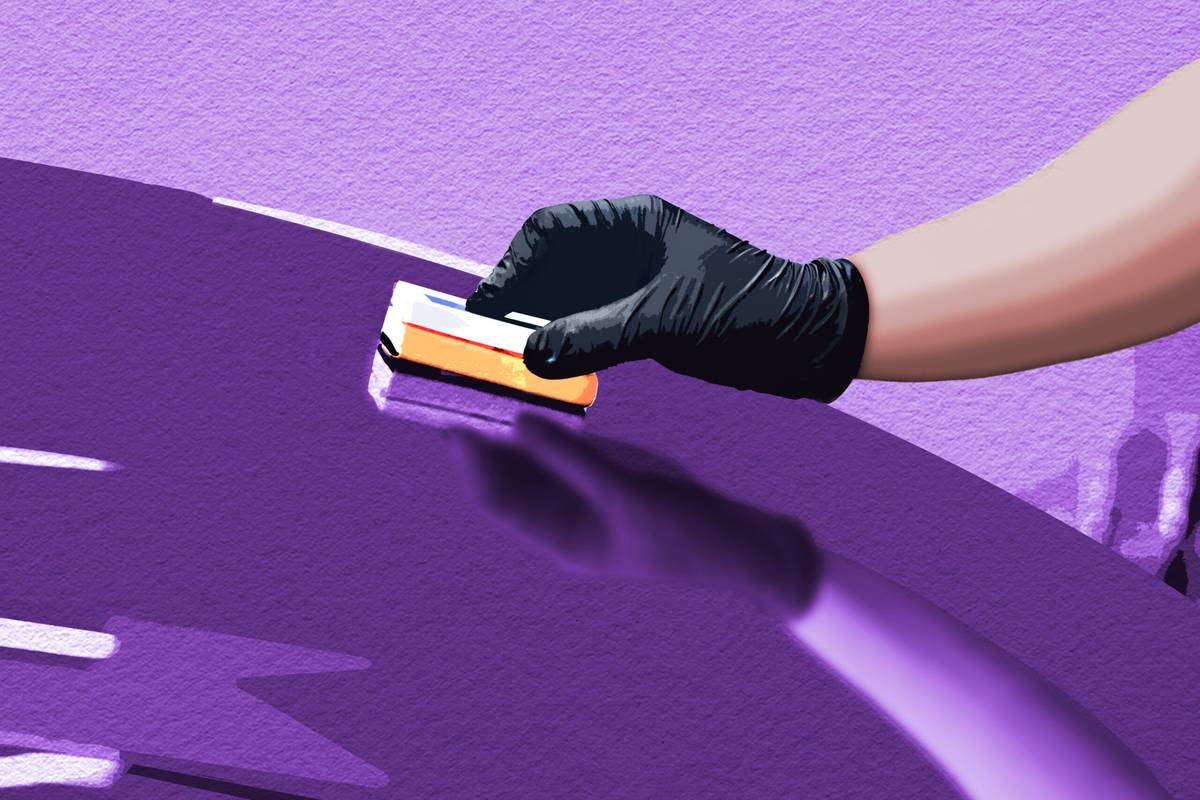What Is Ceramic Coating?

Ceramic coating is a liquid polymer often described as a “shield” or “armor” for your car’s paint; in that way, it’s much like traditional wax. But a ceramic coating is supposed to be better at beading water, protecting against chemical stains (including bird droppings) and repelling dirt. It’s also promoted as being tougher and longer-lasting than wax.
That toughness, however, can be both good and bad.
Related: How Often Do I Need to Wax My Car?
If you think of a ceramic coating as being like covering your car with clear plastic wrap — where you can’t fix any blemishes on the paint underneath — you have the right idea. Making sure the paint is completely clean and spot-free before applying the coating is crucial, as what makes the ceramic coating tough also makes it difficult to remove.
While you can have a ceramic coating applied by a professional, it’ll cost you. Prices will vary, but it can be roughly $1,000, as the whole process — if done correctly — can be time-consuming. But professionals would have the right equipment and, hopefully, do a better, longer-lasting job than you could. If that’s the road you choose, you don’t have to worry about the pitfalls — other than to your pocketbook.
But you can also apply a ceramic coating yourself. Be prepared, however, to dedicate some time to the job, as it’s typically not just a “wipe on, wipe off” proposition.
Types of Ceramic Coatings
Common ingredients in ceramic coatings include silicon dioxide and titanium dioxide, though neither may be listed that way on the ingredient label; in fact, several products on the shelves at local stores we surveyed didn’t even have an ingredient label. Many of the products are called “hybrids,” meaning they also contain some traditional wax.
The ceramic coating itself generally comes in three forms: as a paste, a thick liquid and in a spray bottle. The paste and liquid are typically more professional-grade products and are priced accordingly; you may have better luck finding these online. Some products of this ilk that get good reviews are in the $25-$150 range and often come in a small container, but these thicker products tend to leave a thicker coating, which generally seems to be preferable. Though how long the coatings last can vary with conditions, their life is usually measured in years rather than the months commonly quoted for traditional wax.
Spray bottles are less expensive and can be found just about anywhere automotive supplies are sold. Several seen online, at auto parts stores and at a big box store ranged from $10 to $50 for a fairly large bottle. The large bottle is good because spray-on ceramic coatings may last longer than traditional wax, though not as long as a paste or liquid. However, they do tend to be quicker and easier to apply.
More From Cars.com:
- How to: Get Rid of Tree Sap on Your Car
- How to Fix Scratched Car Paint
- The Best Way to Wash Your Car
- How to Clean Your Vehicle’s Headlights
- Tips for Washing Your Car in Winter
Applying a Ceramic Coating
One thing all ceramic coatings have in common is the necessity to get the paint you’re covering thoroughly clean and spot-free before application. Remember: You’re sealing in whatever it looks like when you apply the coating … and you may be sealing it in for years.
One trick long practiced by professional detailers (and sometimes recommended in a coating’s instructions) is to use a clay bar to thoroughly clean and smooth the paint finish after washing, but before applying the ceramic coating. Clay bars often look like bars of soap, and they can pick up embedded dirt that washing alone can’t dislodge. They can be purchased by themselves (often for less than $10) or in kits that include a spray pretreatment and microfiber cloths (about $20 to $30).
Just as “prep work” is all-important to a good result, so is following the maker’s instructions. For instance, some ceramic coatings are to be applied with the car still wet after washing, some with it dry. A few mention they can be used on windshields to help water run off, while others specifically say not to use them on glass. Nearly universal are the suggestions to use microfiber cloths (rather than terry-cloth towels), avoid applying the coating in direct sunlight and to work on a relatively small section at a time. The last means that you start by washing the entire car but then closely inspect a small area before applying the coating.
From a safety standpoint, it’s often recommended to wear gloves and protective glasses, and perhaps even use a respirator.
While it’s always a judgment call as to whether taking on the job of applying a ceramic coating is worth it, the general thought seems to be that it is. That’s largely due to the reputation of ceramic coating offering superior protection and longevity compared to waxing, and partly supported by the shelf space stores devote to the various ceramic coatings versus traditional waxes. But it’s important to understand the work and potential pitfalls involved before you invest both your time and your money in such a project.
Related Video:
Cars.com’s Editorial department is your source for automotive news and reviews. In line with Cars.com’s long-standing ethics policy, editors and reviewers don’t accept gifts or free trips from automakers. The Editorial department is independent of Cars.com’s advertising, sales and sponsored content departments.
Featured stories

15-Year Car Loans Aren’t a Thing, But Americans Are Getting More Comfortable With Long Loan Terms

2025 Kia Telluride Review: Rougher Roads Ahead



